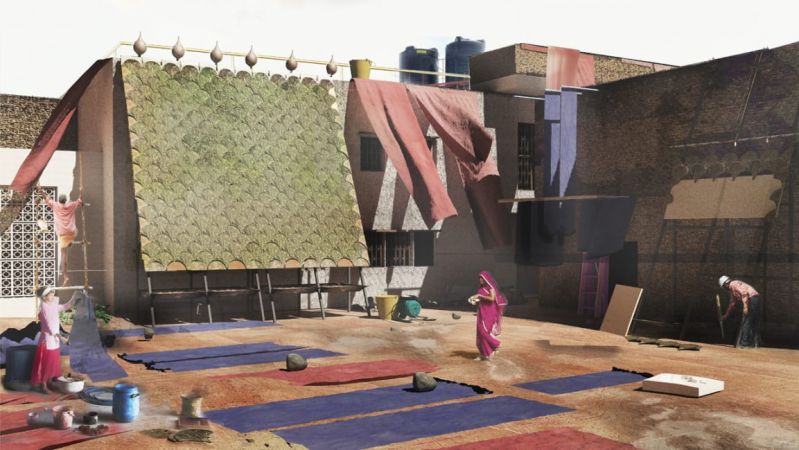These Algae Tiles Turn Walls into Living Water Filtration Systems
Published on by Water Network Research, Official research team of The Water Network in Technology
For small-scale industrial production in rural towns, there often isn’t an easy way to clean this particularly tricky industrial wastewater, which is contaminating bathing and drinking water, writes Katharine Schwab of the Fast Company .

Image: courtesy A/D/O
But a group of designers and biochemical engineers at University College London have created a leaf-shaped clay tile that can clean heavy metals out of wastewater by capturing these particles in an algae-infused hydrogel. They designed the algae-coated tiles to cover the walls of factories or other buildings. A wastewater tank stored on top of the building, powered by nothing but gravity, would funnel water naturally through the tiles’ vein-like channels.
The tiles, called Indus , use a scientific process called bioremediation, in which biological organisms–in this case, algae–help break down the contaminants, cleaning the water in a sustainable way. This technique has been used since the 1940s to clean up messes on heavily contaminated sites: microbes like algae, bacteria, and fungus can eat plastic and oil spills, and have even found their way into household cleaning supplies that can munch on the oils that are clogging your sink.
Read the full article on these innovative tiles on the Fast Company.
Media
Taxonomy
- Water Pollution
- Ultrafiltration
- Filtration
- Algaecides
- Filters
- Filtration Solutions
- Filtration
- Algae
- Pollution
- Filtration
- Water Pollution Control
- Algae Treatment
- Cell and Molecular biology, Plant biology, Algal biology